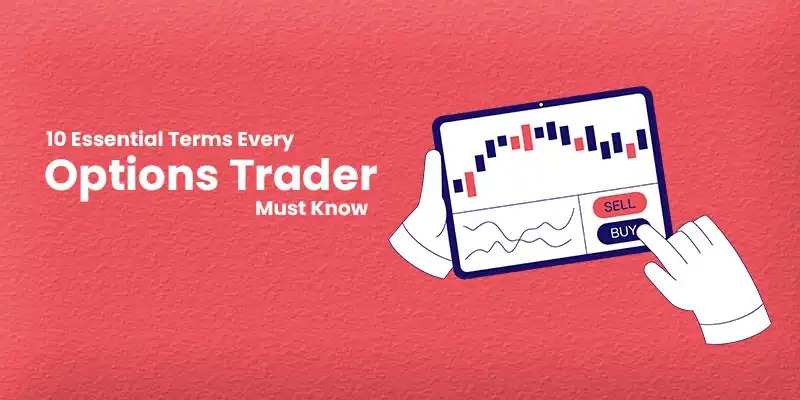One potentially lucrative strategy for portfolio diversification is options trading. To properly navigate, you must have a firm grasp of fundamental ideas. Whether you wish to review your knowledge or are just starting out, making informed judgments depends on knowing these fundamental terms. Let’s take a look at the ten terms any options trader must understand thoroughly.
Contents
- Options Contract
- Call Option
- Put Option
- Strike Price
- Expiration Date
- Premium
- Intrinsic Value
- Time Value
- Implied Volatility
- At, In, and Out of the Money
- Conclusion FAQs
Options Contract
The option contract is an essential financial investment. It provides the buyer with an option but not an obligation to enter into an ownership transaction in the physical asset in question at a stipulated price and by a specific date. For this reason, options trading depends critically on this component of a financial model.
Call Option
Within a designated term, the owner of a call option has legal rights to purchase the underlying asset at a designated price. This is known as the striking price. Usually, using call options, traders assume the price of the underlying asset will rise.
Put Option
While the put option is still valid, the person who owns it can sell the underlying object at the strike price. A lot of buyers buy put options because they think the value of the underlying object will go down.
Strike Price
The strike price of an options contract tells the buyer whether she can sell or buy the underlying asset. The contract’s value is heavily dependent on it.
Expiration Date
The options contract will be considered null and void after the expiration date. This agreement will not be valid after this date. How much a contract is worth depends heavily on the time it expires.
Premium
Specifically, for any of the options contract to be issued to the customer, the customer is required to incur a cost –this is referred to as the premium. These variables entail the price of the underlying asset, the strike price, the market’s inherent volatility, and the time to term.
Intrinsic Value
The difference is known as the intrinsic value of the employed option if it helps the trader by spreading the present price of an asset with the strike price. An asset has an intrinsic value of $10 if it is presently selling at $60 and the strike price on a call option is $50.
Time Value
The premium component that is directly proportional to the remaining duration of the contract is known as the “time value.” In general, the time value of a choice increases as the remaining time increases.
Implied Volatility
The implied volatility estimates the market’s expected deviation for the underlying asset price during the terms of the options contract. Evidently, high implied volatility sometimes leads to a situation when premiums are also high.
At, In, and Out of the Money
- For a call option, In-the-Money (ITM) shows that the underlying asset’s price is more than the strike price. Should the price be below the strike price, the option is a put.
- According to At-the-Money (ATM), the underlying asset’s price is the same as the strike price.
- According to Out-of-the-Money (OTM), if a call option is to be legal, its underlying asset’s price must be less than the strike price. It leaps above a put option’s strike price.
Conclusion
The foundation for success in options trading is understanding these critical terms. Learning these principles will enable you to comprehend them fully, move confidently throughout the market, and make better decisions. Although options trading is a good approach to diversifying your portfolio, you still need a strategy and should always be learning.
Disclaimer: Options trading involves financial risk and is unsuitable for all investors. This article is for educational purposes only and not financial advice. Consult a financial advisor to determine if options trading aligns with your goals.
FAQs
Stocks stand for ownership in a corporation, whereas options are derivative products whose value is based on an underlying asset.
Trading options contracts require a platform, which an options broker provides. In addition, they provide tools for education and market statistics.
The only loss a buyer of options can suffer is the premium they paid. Still, the techniques of option sellers might decide the degree of risk they are ready to bear.
Your European options will only be usable on the expiration date; your American options can be exercised whenever you wish up to that date.
Regarding options trading, most brokers want traders to open margin accounts and follow particular approval processes.

